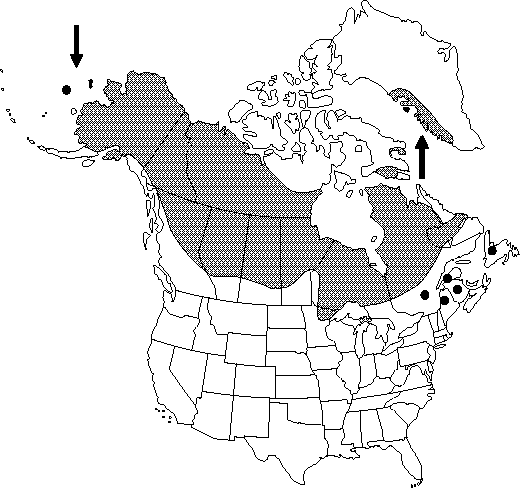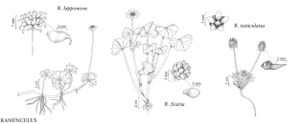Difference between revisions of "Ranunculus lapponicus"
Sp. Pl. 1: 553. 1753.
imported>Volume Importer |
imported>Volume Importer |
||
| Line 51: | Line 51: | ||
|publication year=1753 | |publication year=1753 | ||
|special status=Illustrated | |special status=Illustrated | ||
| − | |source xml=https:// | + | |source xml=https://bitbucket.org/aafc-mbb/fna-data-curation/src/2e0870ddd59836b60bcf96646a41e87ea5a5943a/coarse_grained_fna_xml/V3/V3_176.xml |
|genus=Ranunculus | |genus=Ranunculus | ||
|subgenus=Ranunculus subg. Coptidium | |subgenus=Ranunculus subg. Coptidium | ||
Revision as of 21:46, 5 November 2020
Stems prostrate, buried, rooting nodally, glabrous, not bulbous-based. Tuberous roots absent. Basal leaf blades reniform, deeply 3-parted, 1.1-2.6 × 1.6-4.3 cm, segments undivided or 1× cleft, margins crenate, apex rounded. Flowers: receptacle glabrous; sepals spreading or reflexed from base, 4-7 × 2-5 mm, glabrous; petals yellow, 5-6 × 2-3 mm. Heads of achenes hemispheric, 5-7 × 8-10 mm; achenes 3.8-4.2 × 2-2.2 mm, glabrous; beak persistent, lanceolate, curved, tip hooked, 1.6-2.4 mm. 2n = 16.
Phenology: Flowering late spring–summer (Jun–Jul).
Habitat: Boggy places and lakesides in tundra, muskeg, and boreal forest
Elevation: 0-900 m
Distribution

Greenland, Alta., B.C., Man., N.B., Nfld. and Labr. (Nfld.), N.W.T., Ont., Que., Sask., Yukon, Alaska, Maine, Mich., Minn., Eurasia.
Discussion
Starving individuals among western Eskimo groups ate the soaked plant of Ranunculus lapponicus as a dietary aid before consuming other food (D. E. Moerman 1986).
Selected References
None.
